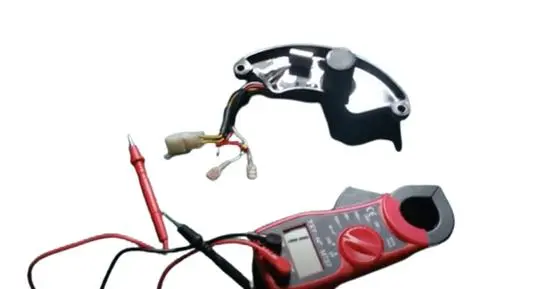When a load of voltage changes, then there is a higher chance of the electrical equipment getting burnt because of voltage surges. To prevent our electrical equipment from facing this problem, we use the automatic voltage regulator, which in short is called AVR.
The electrical equipment may include transformers, feeders, and electrical generators. AVR is essential to protect this equipment from the problems a fluctuating voltage can cause in them. But the question is how to check an automatic voltage regulator if any problem occurs.
Although an AVR protects our electrical equipment, there is also a chance for it to get disturbed because of this fluctuating voltage if the fluctuation exceeds the limit of the AVR. In this case, you should check the working of your AVR immediately because if you neglect that, then your electrical equipment will be the next victim.
Here are some reasons why an Automatic Voltage Regulator can get damaged. You should also check your AVR because if the AVR remains protected, it will be able to protect your electrical equipment in a precise manner.
Table of Contents
ToggleEvents that can damage the AVR:
- Short Circuit:
This is considered the most deadly reason for an AVR failure because a short circuit can damage the AVR, but it causes equal damage to your electrical equipment. So keep an eye on the condition of the circuit and prevent it from getting short.
- Immediate power changes:
Your AVR is here to protect your electrical equipment. Still, if the sudden power changes exceed the limit of your AVR capacity of regulation, it will damage both the AVR and electrical equipment.
- Variable speed of generator:
If the speed of the generator gets uneven, then the voltage usage will also change. This condition can damage the AVR because AVR controls the amount of AC voltage, so if the generator shows speed fluctuations, it can also damage the automatic voltage regulator.
- Overload:
Overload can cause a decrease in frequency, because of which voltage will also get dropped. Now the regulator works to regulate the constant amount of voltage. But in this race of voltage getting constantly dropped, there is a higher chance for your AVR to get damaged.
How to check an AVR with the multimeter?
Note down the above-explained reasons, and if you find any of them occurring with your AVR, then this is where your AVR needs a check. So check it while using the multimeter. The process you have to follow is given below.
- Set the settings of the multimeter according to the required test.
- Connect the probes of the multimeter with the perfect pins.
- Compare the input and output voltages.
Brief explanation:
- First, you have to rotate the knob of the multimeter at the AC voltage point.
- Now connect the probes with the pin accurately.
- For this, you have to connect the black probe with the N pin and the red probe with the L pin.
- Now turn the rotator of the multimeter at the DC option because you have to check the output.
- Here you will see the black and red probe.
- Connect the Red probe with the positive pin and the black probe with the negative pin.
- Check the amount of output that you can read from the display screen.
- If the input is around about 220 volts, then the output should be under the range of 90 to 100 DC volts.
- If the results fluctuate from the average measurements, your AVR has to get damaged because of overload, short circuits, or sudden power changes.
- If the multimeter is showing an accurate output, then congratulations! Your AVR is in good condition.
Final verdict:
We use so much electrical equipment in our daily life. Some come with minor voltage usage, but some, like generators and feeders, need a high voltage. The amount of coming voltage can fluctuate. But that fluctuation doesn’t damage our generator or feeder, and we use Automatic voltage regulators there.
These automatic voltage regulators have different capacities. So install an AVR with a higher capacity to tolerate the fluctuating voltage conditions. Otherwise, any change in the voltage can damage the AVR and cause severe damage to your equipment, which is what we call an expensive call.
Try to use the multimeter to check out the condition of your automatic voltage regulator frequently so that your appliances or feeders remain protected from these changing voltage loads.
The process we have explained above is the easiest way to check the condition of your AVR with the multimeter. So try this and save yourself from big future damage.
Related Guides:




